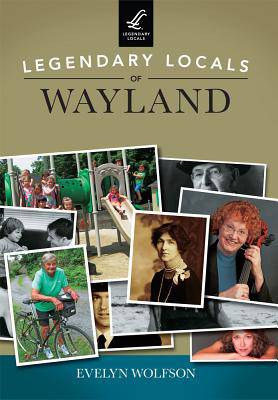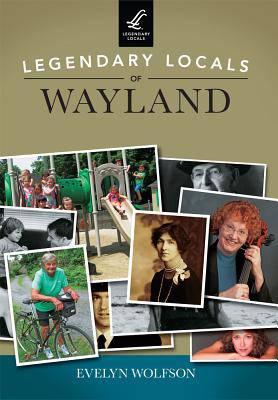
Door een staking bij bpost kan je online bestelling op dit moment iets langer onderweg zijn dan voorzien. Dringend iets nodig? Onze winkels ontvangen jou met open armen!
- Afhalen na 1 uur in een winkel met voorraad
- Gratis thuislevering in België vanaf € 30
- Ruim aanbod met 7 miljoen producten
Door een staking bij bpost kan je online bestelling op dit moment iets langer onderweg zijn dan voorzien. Dringend iets nodig? Onze winkels ontvangen jou met open armen!
- Afhalen na 1 uur in een winkel met voorraad
- Gratis thuislevering in België vanaf € 30
- Ruim aanbod met 7 miljoen producten
Zoeken
€ 34,95
+ 69 punten
Omschrijving
Wayland's historic district is dominated by the 1815 First Parish Church, designed and built by Andrews Palmer of Newburyport, who adapted an Asher Benjamin design. The Rev. Edmund Sears served as minister for 17 years and wrote "It Came Upon the Midnight Clear" for a First Parish Sunday school celebration in 1849. Wealthy Bostonians soon established summer homes in town. Willard Austin Bullard purchased the residence beside the church and christened it Kirkside, and William Power Perkins purchased Mainstone Farm and established the first Guernsey cow farm in the state. By the mid- to late 1800s, Cochituate Village was dominated by a well-established shoe industry and stately Victorian homes lined the streets. A little more than a century later, the town was preparing for an influx of folks from the city. Howard Russell and Allen Benjamin created an official town map, designating streets, and delineating the established uses for the town's 15.2 square miles. Thanks to the vision and hard work of these men and others like them, the town still retains a semblance of its rural atmosphere with almost 3,000 acres of permanently protected open space.
Specificaties
Betrokkenen
- Auteur(s):
- Uitgeverij:
Inhoud
- Aantal bladzijden:
- 128
- Taal:
- Engels
- Reeks:
Eigenschappen
- Productcode (EAN):
- 9781467101912
- Verschijningsdatum:
- 9/03/2015
- Uitvoering:
- Paperback
- Formaat:
- Trade paperback (VS)
- Afmetingen:
- 165 mm x 236 mm
- Gewicht:
- 376 g

Alleen bij Standaard Boekhandel
+ 69 punten op je klantenkaart van Standaard Boekhandel
Beoordelingen
We publiceren alleen reviews die voldoen aan de voorwaarden voor reviews. Bekijk onze voorwaarden voor reviews.











